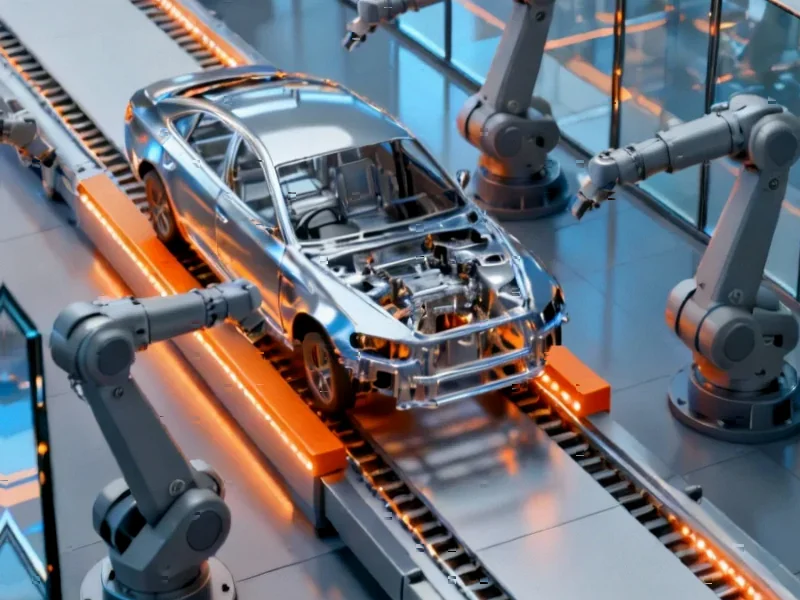Europe’s Automotive Industry Faces New Semiconductor Crisis
The Netherlands’ recent intervention in chipmaker Nexperia has escalated into a geopolitical confrontation that could severely impact European automotive production. Dutch Economic Affairs Minister Vincent Karremans, serving in a caretaker capacity, has exercised new veto powers over the Nijmegen-based semiconductor company—a critical supplier to major automakers including Volkswagen AG, BMW, and Stellantis.
Table of Contents
The Geopolitical Context of Semiconductor Control
This development represents the latest chapter in the ongoing global semiconductor competition. The Dutch intervention follows increasing pressure from US trade restrictions targeting Chinese technology interests. Nexperia, originally a Philips semiconductor division, has become a focal point in this conflict due to its strategic importance in automotive supply chains.
The timing couldn’t be worse for European automakers, who are still recovering from the global chip shortage that cost the industry over $210 billion in lost production in recent years. With Nexperia components appearing in everything from engine control units to advanced driver assistance systems, any disruption to their supply could halt assembly lines across the continent.
Critical Components at Risk
Nexperia specializes in several semiconductor categories essential to modern vehicles:, according to industry analysis
- Power management chips that regulate electrical systems
- Microcontrollers that control everything from emissions to infotainment
- Discrete semiconductors for basic electronic functions
- Logic devices that process signals throughout the vehicle
These components have become increasingly vital as vehicles incorporate more electronic systems. The average modern car contains between 1,400 and 1,500 chips, with premium vehicles requiring up to 3,000 semiconductor units., according to expert analysis
Broader Implications for European Manufacturing
The automotive sector represents approximately 7% of the European Union’s GDP and employs roughly 13.8 million people directly and indirectly. A significant semiconductor supply disruption could trigger:, as covered previously
- Production delays across German, French, and Italian manufacturing facilities
- Price increases for consumers as supply constraints affect availability
- Delayed electric vehicle transitions as automakers prioritize existing model production
- Competitive disadvantages against Asian and American manufacturers with more secure chip supplies
The Path Forward for European Semiconductor Sovereignty
This crisis highlights the urgent need for Europe to develop greater semiconductor independence. The European Chips Act, which aims to double the EU’s global semiconductor market share to 20% by 2030, has taken on new significance. However, building fabrication facilities requires years and billions in investment.
In the interim, European automakers may need to:
- Diversify their supplier base beyond current single-source dependencies
- Increase inventory buffers for critical components
- Collaborate on semiconductor development through industry consortiums
- Accelerate qualification processes for alternative component sources
The Dutch government’s stance reflects broader European concerns about technological sovereignty and supply chain security. As Karremans navigates this delicate situation, the entire European automotive industry watches anxiously, hoping for a resolution that maintains both geopolitical principles and manufacturing continuity.
The coming weeks will prove critical as automakers assess their semiconductor inventories and production schedules. With lead times for some automotive chips still exceeding 40 weeks, any disruption to Nexperia’s operations could have immediate and severe consequences for Europe’s industrial output.
Related Articles You May Find Interesting
- Europe’s Space Gambit: Can Airbus-Leonardo-Thales Alliance Challenge Starlink Do
- U.S. Considers Software Export Restrictions in Escalating Tech Trade Standoff wi
- Wonder’s $12M Seed Round Signals New Era for AI-Powered Filmmaking
- Rosslyn’s Integrated Ecosystem: Fueling South Africa’s Automotive Renaissance
- Autonomous AI Systems Reshaping Business Operations, But Human Oversight Remains
This article aggregates information from publicly available sources. All trademarks and copyrights belong to their respective owners.
Note: Featured image is for illustrative purposes only and does not represent any specific product, service, or entity mentioned in this article.



